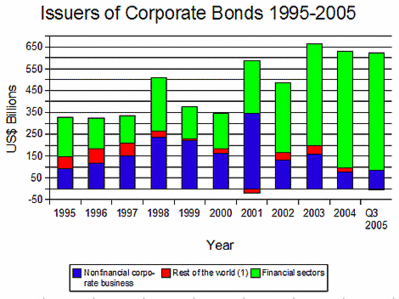Agency Bond Issuance Recovers: Q1 2006
by John Schroy filed under Agencies, Mortgages, Bankers, Brokers
Although the pace of net new issues of agency bonds was still $79 billion below levels of 2003 — the peak year before the crack-down on Fannie Mae for accounting irregularities — issuance of mortgage bonds by government-sponsored-enterprises recovered to $492 billion in Q1 2006 (annual rates), according to Federal Reserve flow of funds table F210.
The three principal buyers of these new agency bonds were foreign investors, commercial banks, and securities brokers and dealers.
Increased issuance of agency bonds and securitized mortgages helped in pushing interest rates up in Q1 2006.
Recovering From the Scandal
As recently as Q3 2005, agencies were redeeming more bonds than they were issuing, as they worked to get their balance sheets in conformity with capital adequacy requirements.
New issues of agency bonds had been down for almost two years, following financial scandals at Fannie Mae. During this period, issuers of asset-backed securities (mainly commercial banks) moved into the breach, capturing a larger share of the mortgage securitization business.
Fannie Mae has long enjoyed the political backing of the Democratic Party and with the possible recapture of control of the House of Representatives by the Democrats in November 2006, it may be able to get past the scandals and return to ‘business as usual’.



